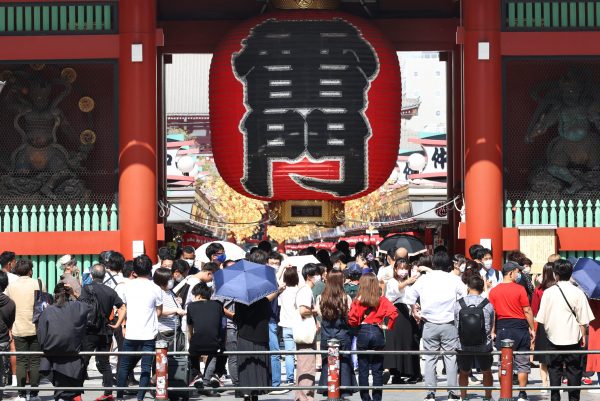Although the media has focussed on the prospects of a renewed boom in tourism, the Kishida Cabinet’s proposed changes will restart pre-pandemic efforts to increase the participation of foreign workers at all levels of the labour market.
Despite flagship projects such as Abenomics and Kishida’s New Capitalism, Japan’s economy, already stagnant before the pandemic, is struggling to recover. For Japanese households, the situation is set to worsen in expectation of food price hikes in the coming months. With wages continuing their decades-long stagnation, the combination of currency devaluation and inflation has contributed to the steady erosion in real wages and purchasing power for much of the Japanese workforce.
While a scandal centred on political and personal intrigue might be survivable with careful management, a sustained decline in living standards represents a fundamental challenge not only to Kishida’s leadership of the Liberal Democratic Party but to the dominance of the LDP itself. Unable to prop up the yen, Kishida has been pushed towards major policy reversals previously considered too risky to implement.
The first has been a full-scale nuclear restart, buoyed by a large shift in public opinion in accepting the technology’s necessity since the outbreak of the war in Ukraine and the accompanying destabilisation of energy markets. The second major shift will be the restoration of the pre-pandemic travel regime, with only three COVID-19 vaccinations required for visitors.
Despite public sentiment pointing towards majority support for the years-long restrictive posture towards foreign visitors, Kishida and his cabinet hope that by changing course, Japan will reap the benefits of reopening in several ways.
First, tourists are expected to drive a revival of consumption and boost what was the world’s third largest travel industry. The industry has largely depended on government subsidies and domestic travel promotions to survive the pandemic.
Second, the influx of foreign currency is seen as a way to reduce some of the pressure driving the devaluation of the yen. The inflow of foreign currency from tourism was US$46.1b in 2019. If revived, such cash could close a significant portion of the country’s trade deficit.
While a boom in tourism may follow due to pent-up demand, a few big caveats remain. Before the pandemic, mainland China accounted for 28 per cent of tourist numbers but an estimated 36.8 per cent of spending. That income stream is much-diminished thanks to Beijing’s restrictions on ‘unnecessary’ travel by Chinese citizens.
But restoring foreign tourism would be far from a panacea for the economy. Despite the nation’s reputation as a global tourism hotspot, domestic tourism accounted for more than 80 per cent of tourism spending even before the pandemic. Of greater consequence is how Japan will fare in increasing foreign participation in the economy. Challenges abound in this sector.
The government continues to fail to attract sought-after professional talent despite offering a one year fast track to residency for the most qualified prospects. Refusing entry to many international students hoping to attend Japanese universities, a major source of workers in this category, didn’t help either.
The number of participants in quasi-guest worker systems, such as the Technical Intern Training Program (TTIP), was at an all-time high before the pandemic. That program was crucial in addressing critical labour shortages, particularly in industries such as nursing, agriculture, seafood processing and manufacturing.
The introduction of new visa categories such as the Specified Skills visa, which opened a legal pathway towards residency and family reunion for previously excluded blue-collar workers, demonstrated the willingness of the Abe government to recruit more foreign workers while rhetorically denying the implementation of an ‘immigration policy’.
Restoring these immigration flows and expanding them beyond pre-pandemic figures will be tremendously important to rebooting the Japanese economy. But that is much easier said than done.
While entry for workers such as those under the TITP has been permitted under restrictive conditions at various points throughout the pandemic, many were unable to enter Japan as planned due to border closures associated with pandemic waves like Omicron. Schemes in South Korea and Taiwan may have an advantage in luring prospective workers with guarantees of trouble-free entry. The weakening of the yen further undercuts the allure of working in Japan, especially as the minimum wage in South Korea, unlike in Japan, keeps pace with inflation.
Although some welcome the reopening of Japan as a return to business as usual, the Kishida government will struggle to restore pre-pandemic numbers of foreign workers if it keeps the policies of preceding administrations.
What lies ahead is a difficult decision about whether to offer greater rights and privileges to foreign workers, even those at the lower end of the labour market, or to maintain exclusionary policies at the cost of Small-and-Medium sized enterprises (SMEs) that employ them.
Yunchen Tian is Assistant Professor of Political Science at Saint Martin’s University.

